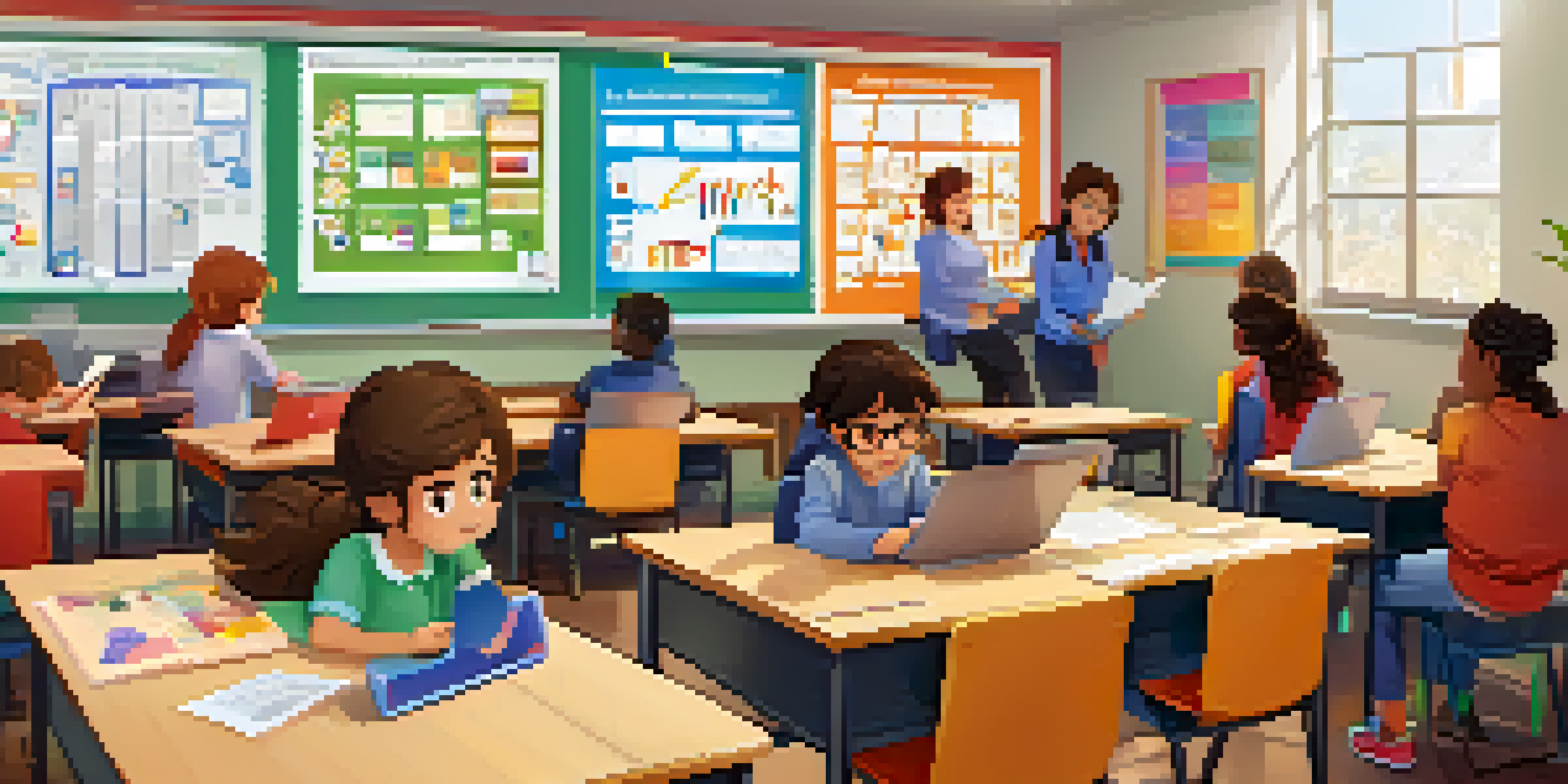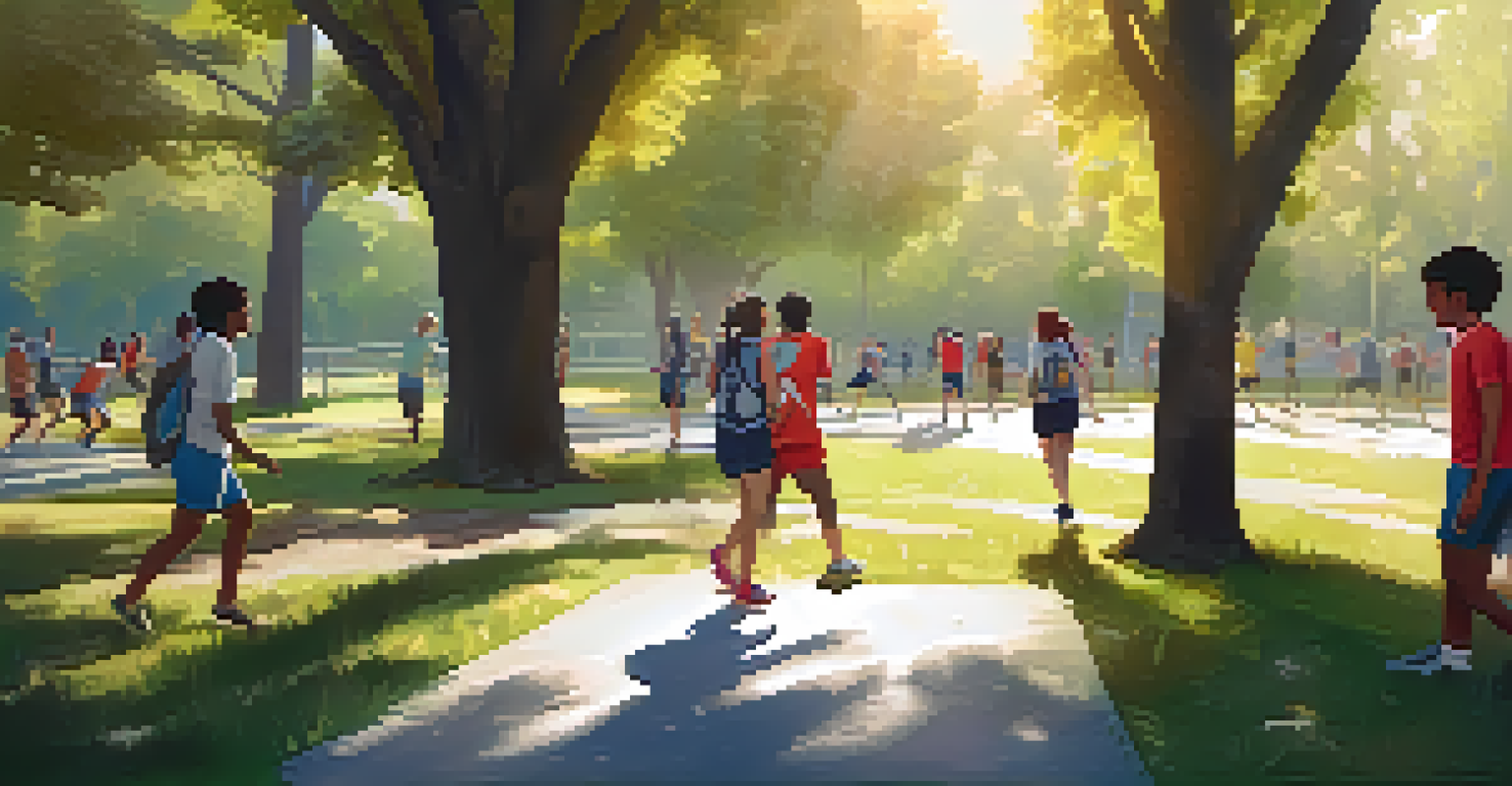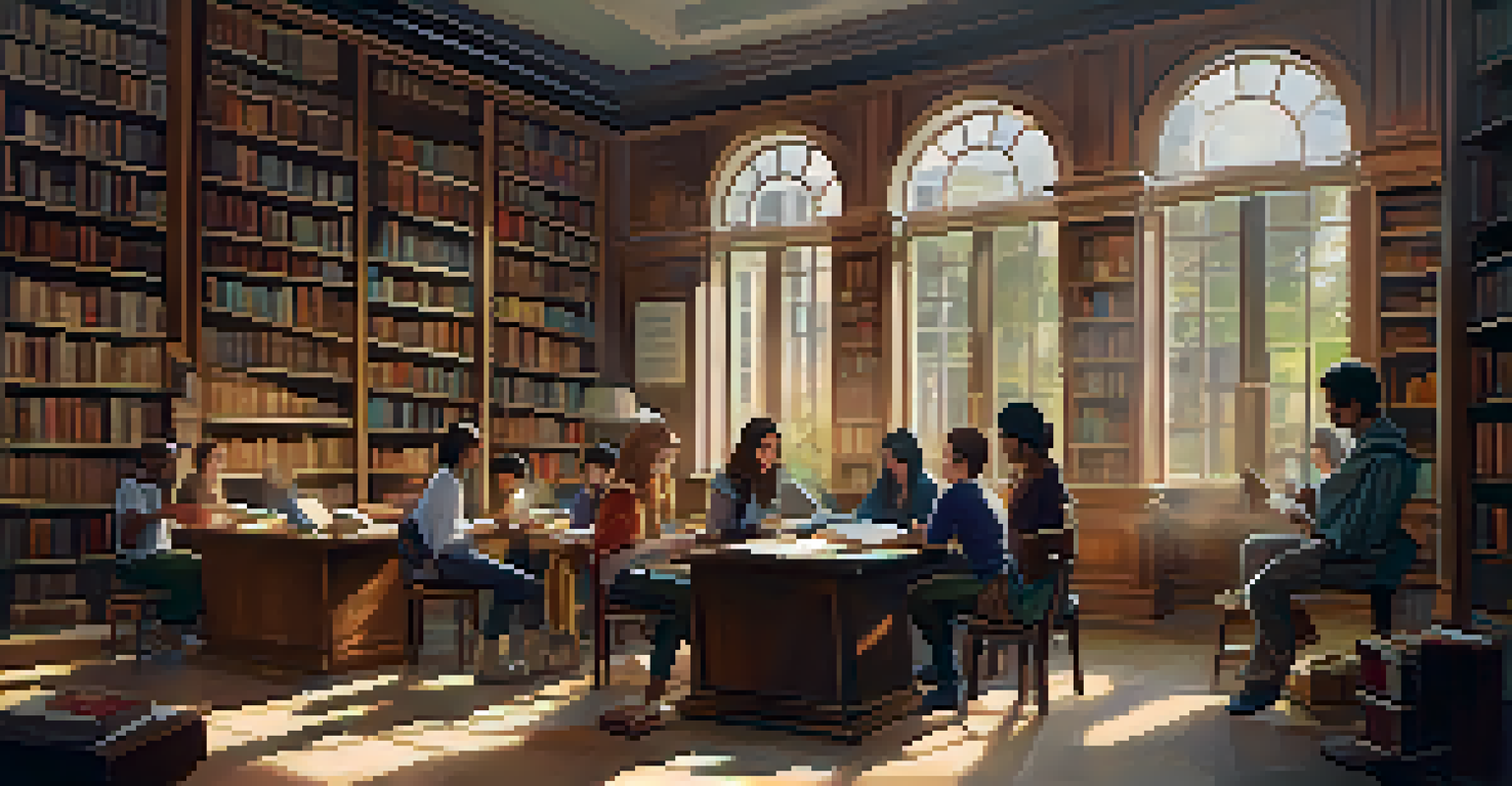Utilizing Gamification to Enhance Collaborative Learning

What is Gamification and Why It Matters
Gamification refers to the application of game-design elements in non-game contexts, like education. By integrating elements such as points, badges, and leaderboards, it transforms the learning experience into something more engaging. This approach is particularly effective in collaborative learning environments, where teamwork and interaction are key components.
Games are the most elevated form of investigation.
When students are motivated by game-like elements, they often become more involved in the learning process. For example, a classroom that employs a point system for group projects can encourage students to collaborate more effectively. As they work together to earn rewards, they not only absorb knowledge but also develop essential teamwork skills.
Moreover, gamification instills a sense of friendly competition, which can enhance engagement. Students are likely to participate more actively when they know their efforts can lead to recognition or rewards. This sense of community and shared goals can significantly improve the overall learning atmosphere.
Key Elements of Gamification in Learning
To effectively use gamification in collaborative learning, certain key elements should be incorporated. These include clear objectives, rules of play, and feedback mechanisms. By setting specific goals, students understand what is expected of them, making it easier to track progress and success.

In addition to clear objectives, providing meaningful rewards can boost motivation. Badges for completing tasks or points for successful collaboration can create a sense of accomplishment. This not only encourages participation but also fosters a positive competitive spirit among peers.
Gamification Enhances Learning Engagement
By incorporating game elements like points and badges, gamification makes learning more interactive and motivates students to engage deeply with the material.
Feedback is crucial in this process; it helps students understand their strengths and areas for improvement. Gamification allows for immediate feedback, which can be more impactful than traditional grading systems. This real-time response fosters a growth mindset, encouraging students to learn from their experiences.
Creating a Collaborative Environment with Gamification
To effectively harness gamification, educators must create a collaborative learning environment. This means designing activities that require teamwork, where students can use their unique skills to contribute. For instance, group challenges that necessitate collective problem-solving can foster collaboration while incorporating game mechanics.
The only way to win is to learn faster than anyone else.
Using technology can enhance this experience further. Online platforms that facilitate group activities can integrate gamification elements seamlessly. Tools like Kahoot or Quizizz not only make learning fun but also allow students to work together in real-time, sharing ideas and strategies.
Additionally, encouraging peer feedback and recognition can strengthen the sense of community. When students praise each other for their contributions, it reinforces collaboration while gamifying the learning process. This mutual support can lead to deeper understanding and more meaningful connections among learners.
Real-Life Examples of Gamification in Education
Numerous educators have successfully implemented gamification strategies to enhance collaborative learning. For instance, a middle school teacher might create a scavenger hunt for students to complete in groups. Each completed task earns points, and the group with the most points wins a reward, fostering teamwork and engagement.
Another example is the use of role-playing games (RPGs) in literature classes. Students can assume different roles from a story and work together to solve problems or complete quests. This not only enhances comprehension but also builds collaboration skills as students discuss and negotiate their roles within the group.
Collaboration is Key in Gamified Settings
Creating activities that require teamwork not only fosters collaboration but also helps students develop crucial interpersonal skills while learning.
These examples illustrate that gamification can be tailored to various subjects and age groups. By creating engaging scenarios, educators can motivate students to participate actively while collaborating with their peers, making learning both fun and effective.
Challenges in Implementing Gamification
While gamification offers many benefits, there are challenges in implementing it effectively. One major hurdle is ensuring that the game elements align with educational objectives. If the focus shifts too much towards competition, it might detract from collaborative learning goals.
Another challenge is the diverse range of student motivations. Not all students are driven by the same incentives, and what motivates one group may not work for another. Educators must find a balance between rewarding collaboration and recognizing individual achievements.
Lastly, the integration of technology can sometimes be a barrier. Not all schools have access to the necessary tools or resources to implement gamified learning effectively. However, with creativity and resourcefulness, many low-tech or no-tech solutions can still enhance collaborative learning through gamification.
Measuring Success in Gamified Learning Environments
To determine the effectiveness of gamification in collaborative learning, educators need clear metrics for success. This can include qualitative measures, like student engagement and enthusiasm, as well as quantitative metrics, such as improved grades or completion rates. By analyzing these factors, educators can assess whether the gamified approach is meeting its objectives.
Peer assessments and self-reflections can also provide valuable insights into the learning process. Encouraging students to evaluate their own and each other’s contributions can foster a deeper understanding of collaborative dynamics. These reflections help educators identify areas that may need adjustments or enhancements.
Challenges in Gamification Implementation
While beneficial, successfully implementing gamification requires aligning game mechanics with educational goals and addressing diverse student motivations.
Finally, maintaining open communication with students about their experiences can provide ongoing feedback. Surveys or informal discussions can help educators gauge the effectiveness of gamification strategies and make necessary changes to improve the experience for future learners.
The Future of Gamification in Collaborative Learning
As technology continues to evolve, the potential for gamification in collaborative learning will only grow. Future advancements could lead to more immersive experiences, such as virtual or augmented reality environments where students can collaborate in entirely new ways. These innovations can create engaging scenarios that further enhance teamwork and learning.
Moreover, the increasing demand for personalized learning experiences suggests that gamification will need to adapt. Tailoring game elements to individual student interests and learning styles will be crucial in maintaining engagement. This personalized approach can strengthen the connection between students and their collaborative efforts.

Ultimately, the future of gamification in education lies in its ability to foster meaningful collaboration. By continuously refining and innovating these strategies, educators can create dynamic learning environments that inspire students to work together, think critically, and engage deeply with the material.